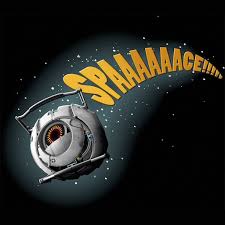I’m trying to think of games which really bring out the sense of vertical space, or which use up/down as heavily as the other directions. I do recall one completely 3d game, the one where you’re some kind of Jovian blimp creature. I can think of “vertical moments” in otherwise NSEW games. But what are some games that really sell elevation or verticality, for an extended time? Hypothetical examples could be a game about climbing on some sort of scaffolding, or set in a tower, or a roguelike-style dungeon crawl.
All diving games.
The glass maze in Sorcerer.
That’s exactly what this game by Corax is (in French), ascending a tower while battling:
Gotomomi, as well as a few other games by the same author, used U/D just about as much as the other directions. It’s set in Japan and you are always gonna up floors ok buildings or down into the subway, etc. The game excels at a sense of space:
Inside Woman is perhaps the largest game by an author known for large games, and it’s about working your way up the floors of a city-sized building where higher levels have higher privileges:
I recently replayed Emily Short’s Bronze which makes extensive use of roughly three floors of a giant building:
Finally, one of my favorite Andrew Achultz games is Threediopolis, which I think inspired me when I wrote that Jovian blimp game you were talking about (Ether, unless there’s two games like that). I can’t remember if I played that game first and got the idea or if I found it after I wrote ether and noticed similarities anyway here it is:
I suspect Porpentine’s climbing 208 feet up the ruin wall is not what you’re looking for, but it’s what I immediately thought of and it is vertical.
However, it does lead me to the IFDB poll Vertical Games (“Looking for games that really explore verticality”), which might be of interest.
Metroidvania style platformers (Super Metroid, Castlevania: Symphony Of The Night, etc.) tend to have a lot of verticality to them. I’m not sure if you were looking for IF examples though?
I mean…maybe it’s a dumb answer from me, but DCS is primarily an air combat simulator, and part of missile warfare has an aircraft moving up and down a lot, because lower altitudes are harder on incoming missiles, while higher altitudes give your own missiles advantages.
Dwarf Fortress, Terraria, Subnautica, and Minecraft scale different game elements based on your depth.
A Reckless Disregard For Gravity is based entirely on skydiving through an expanded version of Boston(?) after materials engineers have discovered anti-gravity substances.
The original Titanfall used a lot of verticality.
Kerbal Space Program, if I’m allowed to be pedantic. Children of a Dead Earth, for similar reasons, because your orbital altitude allows you different opportunities at different places.
Though, what’s really funny, is as much as I love verticality in games, and feel like I see it a lot, I’m actually having a lot of difficulties thinking of examples…
EDIT: The AquaNox games use verticality as well. Although, it’s not really for specific gameplay reasons; it’s just another dimension of movement available to you, while you work on your combat positioning.
EDIT 2: Can’t believe I forgot Getting Over It.
Also, none of these are IF, but I don’t think that’s a constraint.
I forgot I’d voted in that poll. There are a lot of different perspectives. Hell in a Hamper treats height as a number. Excelsior captures a pyramid-shaped structure. I second JTN’s recommendation of that poll, which had (for me) a combination of stuff I’d liked for a while and some that seemed very worth checking out.
Mermaids of Ganymede, from IFComp 2021, is one I’d add to the list–not the whole game, but in one of the 5 sections (the 4th, I think,) there’s a semi-maze-map where you go from 10’ below to 170’ (130’ maybe?) with water monsters chasing you. It’s in twine and not parser. I think there’s one location for each 10’ down you go. Since you can choose where to start, it might be very interesting to focus on.
I have a feeling there are other IFComp games I’m missing.
Andrew Schultz’s The Cube in the Cavern is the first thing that came to my mind from your first sentence. It’s not big enough to be “especially vertical” but (by definition) uses up/down as much as the other directions. It’s a short puzzle set on a 3x3x3 cube.
First-person 3D platformers even more so. (I guess they’re over-the-shoulder more often than strictly 3D.) The whole genre is pretty much all about verticality.
This is the Tomb Raider series, 3D Prince of Persia trilogy, and so on. Ico and Shadow of the Colossus. Mirror’s Edge, Solar Ash. Submerged. The whole point is up.
The new Legend of Zelda game, Tears of the Kingdom, goes so far as to have three maps of the world: below ground, ground, and sky.
There was someone recently asking about a grappling hook mechanic to link vertical levels together dynamically in the game. Also, if we are to include non-IF, I thought Portal 2 was fairly brilliant with verticality, climbing up and up from the bowels of the facility, keeping with this theme to the very climatic moment of the game. If that moment isn’t radical verticality in a game, nothing is.
Probably me (grapnel thread).
Yep, that was it.
Lots of suggestions to work through!
I had been thinking primarily of IF… it just struck me that although there are no technical or mechanical challenges to doing it, the IF I’ve played is predominantly planar. I can think of many more examples outside of IF, including the entire genre of platformers.
I know I’ve played text adventures with a lot of verticality, but do you think I can remember them now? The ones that came to mind were located in high rise buildings. Here’s some really obscure examples for you:
- Kidnapped by Peter Kirsch. Escape from the 9th floor of a building by descending one floor at a time. Each floor has different puzzles to get to the floor below.
- Escape from the sixth floor by Jonathan Stoffer. You are a corporate spy who rappelled into the sixth floor of a corporate building when your knot failed and you have to find another way out of the building.
- Disaster at the Acme Tower by Ryan Beehler. Fire has broken out on the 10th floor of an office block and you have to escape down one of the two stairwells.
You will notice a commonality in the theme in these games.
It strikes me as interesting that a lot of these games, even the ones being listed here as very vertically-oriented, still treat up and down as “special” compared to the other directions. They’re the directions that mean progress in the game, separating whole areas rather than just rooms.
Which makes sense: all the other directions have a sort of symmetry to them which up and down don’t, and in human life, going up or down takes more physical effort than going any other way. In English we also have words for intermediate horizontal directions (northeast, southwest, etc) but not intermediate vertical directions (*northup, *southdown) which gives more variety in laying out a map.
But it would be interesting to come up with a game concept where, say, north-south-up-down are the main directions, and going east and west is the “special” dimension that indicates progress through the game. Maybe you’re in a series of towers and the separation between towers is more interesting than the separation between floors?
I think this is similar to how Dwarf Fortress was originally designed, though not quite, in some ways. There didn’t used to be true depth for digging up and down, but the original idea was you were digging east into a huge mountain range, and as you continued east you would find different kinds of chasms to cross.
However, I feel like a game designed to have any dimensional axis be the “special” one will have the same effect, but a different name.
AquaNox is one game that doesn’t treat up and down like it’s special in any way. If you go up or down, you are just moving relative to the enemies in some way, just like if you were moving north, south, east, or west. There’s only one mission in the whole game where going up matters, but any other time it’s just another mundane dimension of movement.
This is true, but I think it’ll end up feeling different because of the importance up/down has in our daily life.

